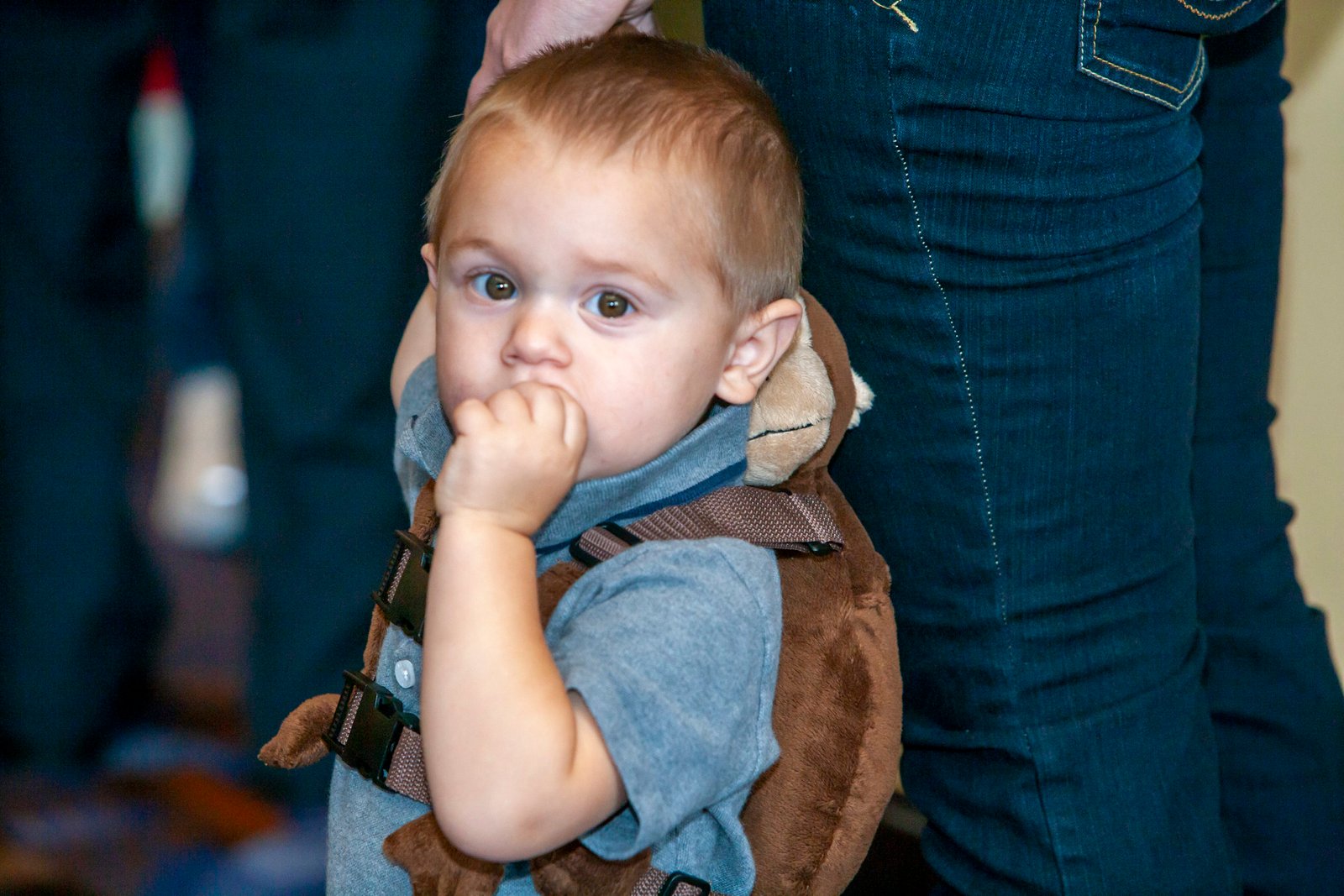[ad_1]
Published: August 2, 2023
Helping in the church nursery seemed like a great way to jump in during the Easter rush. But after months of COVID-connected family time, the kids in our community seemed to be experiencing new levels of separation anxiety. Psychologists and child development experts are seeing an uptick in children being fearful when separated from a parent or caregiver. (Check out these 7 trends to watch for in your post-COVID ministry.) As a result, my volunteer opportunity turned into an experience in humility. I helplessly held my arms out to a frightened 3-year-old who stubbornly clung to her mom’s leg, looking at me with teary-eyed suspicion. Separation anxiety does more than fill your classroom with whimpering children. This common phenomenon creates anxious and nervous volunteers, too!
To better prepare myself for next time, I asked a handful of friends in ministry for advice. These preschool experts shared their tried-and-true tips for helping preschoolers handle separation anxiety.
1. Create a kid-friendly environment.
Be sure your room has visual appeal that engages children as they look into the room before they enter. Set out stuffed animals, toys, discovery stations, and hang posters on the walls.
When considering art for your walls, be sure all kids are represented. Children’s leader Esther Moreno cautions, “I’ve seen children feel unsafe because of environments that weren’t inclusive. Kids notice everything! If everything a child sees represents one race, a child of a different ethnicity may feel excluded, causing them to go into a fight or flight mode and ignite anxiety through the roof!” (Look here for more practical tips on creating a welcoming place for preschoolers.)
2. Take a tour.
Showing the child around the room and talking together can help the child feel like the classroom is his or her “territory.” Exploring the room also helps you find something kids like—meaning it’ll be easier to move their emotions from fear to curiosity to engagement. If the child is really upset and it’s impacting the rest of the room, a walk down the hallway to a new environment often helps. Preschool expert Sheila Halasz advises, “As you come back to the room, you can even talk about the fact that you and the child beat mommy or daddy back.” At pick-up time, kids may end up boasting proudly at how speedy they were, and how slow their parents are!
3. Get out the crayons.
Suggest drawing a picture for the ones kids are missing. If the child doesn’t want to or cannot draw, you can start to draw things and ask what else mommy or daddy would like. The distraction of thinking is often enough to get kids out of the full crying stage.
4. Get down on a kid’s eye level.
Halasz shares the science supporting this action. “There is neuroscience behind connecting with a child eye-to-eye versus being stood over. More stress hormones are released when there’s a larger height difference. Being at a child’s eye level puts his or her hormones in a less-stressful state.”
5. Take a few deep breaths.
Pretend your finger is a candle and have the child blow it out the number of years old they are. This helps physically reset the nervous system. Halasz says it all comes back to those stress hormones. “If you blow at least six deep breaths, you’re able to change the flow of stress hormones in the body.”
6. Create a routine.
Whenever possible, have the same volunteer at check-in, welcoming little friends. Leader Kathleen Schrader finds that consistency throughout the morning helps, too. “Pull out the same blanket, and animal crackers for snack time. Pray the same simple prayer together. (“Dear God, thank you for our snack and our friends at church. Amen.”) Serve snack with adults and kids together seated on the floor.”
As you welcome little ones, talk about the things you’ll be doing that morning. If kids regularly attend, remembering these little routines can be reassuring.
7. Avoid labeling.
Halasz shares that labels can be shameful for kids, reinforcing their fear of being in a new situation and increasing the risk of separation anxiety. “A young boy walked into a church for the first time and hid behind his mother’s legs. The well-meaning teacher said, ‘Oh I see you’re bashful!’ Labeling a child as bashful or shy is never something helpful for a child to hear. It is not up to us to define something that’s actually age-appropriate behavior. I was so sad to see this boy’s face when he was labeled. He didn’t speak the entire time he was in the building with his mother.”
8. Chat about what parents are doing while they’re away.
Talking about what mommy or daddy are doing while they’re gone can comfort some children. Often, kids just need to know that parents are safe and will return. Use phrases such as, “Mommy went to the big church room, and will be back when she’s done talking there,” or “Daddy is talking to his friends for a while. We can play with our friends here until he comes back.”
9. Acknowledge sad feelings.
Validate kids’ feelings by recognizing that it’s okay to feel sad. Halasz gives helpful language like this, “I see you’re sad that mom isn’t here. It’s okay to be sad when we miss someone. When we’re sad in class, we can hold our stuffed dog. This dog can feel sad too when he is scared. Making the stuffed animal talk and role play some things often helps change the course. For example, ‘Woof, woof, My mommy’s not here. Sometimes I cry when mom isn’t here. I sound like this: ‘Boooo hooooo!’ (The sillier your cry, the better!) Can you say ‘boo hoooo,’ too? My mom always comes back and then I am soooo happy. Then I say, ‘Yeaahhhhhh!’ Can you say ‘yeah’ too?”
10. Try setting a time limit.
Here’s an example: “I see you’re sad. I think you can cry for two more minutes and then we’ll find something fun to do. I’ll set the timer so we can know when it is play time.” Often before you get to the two minutes, kids have calmed and are ready to play. If not, the timer is an outside support that the child may follow more than a teacher giving a suggestion.
11. Discover their favorites.
Preschool teacher Heather Meacham likes to engage kids in focusing on their favorite things. “I talk with the kids about their favorite things such as color, food, toys, or pets.” Helping preschoolers redirect their focus toward things that bring them joy is a great way to minimize separation anxiety.
12. Find a quiet place.
A classroom full of noise and activity may feel overwhelming. Lead kids to a quiet area for some “down time,” away from the busy classroom, Meacham recommends setting up a quiet corner with pillows and books where kids can snuggle, find peace, and enjoy quiet.
13. Bring out the books.
Looking at books together gives you something to talk about as you point to pictures. (Check out these larger-than-life, eye-catching, preschool-friendly Bible Big Books to add to your classroom!)
14. Take time to pray.
Never underestimate the power of praying with a child. Thank God for our loving parents and caregivers. Ask God to help your little friend feel safe and happy with his or her friends at church. Help the child envision God wrapping arms of love and protection around him or her.
15. Empathize and share that you sometimes miss people, too.
Meacham has found power in pointing out that grown-ups sometimes miss people, too. “Share how you miss your parents, too. Talk about what you like to do with them.” You may even have a funny story to share about a parent, or what it was like when you were little. Then transition into what the child will be doing with his or her family after church. You’ll be reassuring the child that mommy and daddy are coming back, and good things are waiting!
16. Talk about family and pets.
Get out your phone and show pictures or videos of your kids and pets. This can build a bridge to commonalities (“I have a dog, too!” or “I went to Disneyland, too!”) and give kids something fresh and fun to focus on.
17. Give kids a special job.
Sometimes a sense of responsibility takes the place of sadness or fear. Would the child like to be your helper in caring for the room or preparing for part of the lesson? You might say, “Let’s water the plants,” or “I need help cutting things for this craft we’re doing later. Would you be able to help me?”
18. Sing.
Belt out fun, preschool-friendly songs, especially familiar ones that they can help with when you “get stuck” or “forget the words.” Or have a worship DVD with preschoolers onscreen that they can join you in watching and imitating. Play-n-Worship for Preschoolers is a fun DVD of worship videos just for little ones!
19. Talk about their outfit.
Sometimes parents dress up their littles ones in clothes that are great conversation starters! “Those shoes are so sparkly and pretty! Do you think I could borrow them? No? Why not?” “Your shirt has a dinosaur on it! Are you sure that’s safe in our classroom? Maybe you can help me be brave from that wild dino!”
20. Get a little silly!
Nothing turns a frown upside down like silliness! Ask kids if they can make a silly face. Make animal faces like turtles or monkeys. Ask what a bird would look like if it were crying. (You may end up getting other preschoolers to join into the silliness, filling your room with laughter.)
Separation anxiety manifests itself differently in all kids and is overcome differently for each child. Moreno adds these last few bits of advice, “At the end of the day, children are different. There’s no one-size-fits-all approach. Be willing to go the extra mile! Be patient and nurturing with both the child and the parents! Partner with them to learn more about their child and techniques that may help. Pray like it’s nobody’s business over your kids who are struggling with separation anxiety! Ask God to help you reach a child effectively and to cast out all fear in their little hearts! It’s not uncommon for God to surprise you with unexpected breakthroughs that will touch your heart and grow your faith!”
Looking for more ways to helping kids manage fear? Check out this quick read on raising fearless kids in a fearful world!
© Group Publishing, Inc. All rights reserved. No unauthorized use or duplication permitted.
[ad_2]
Source link







You must be logged in to post a comment.